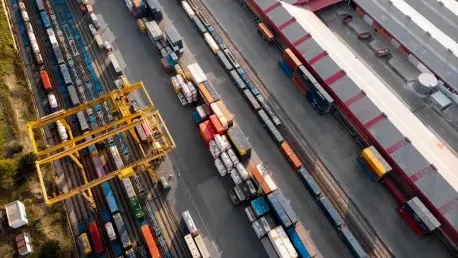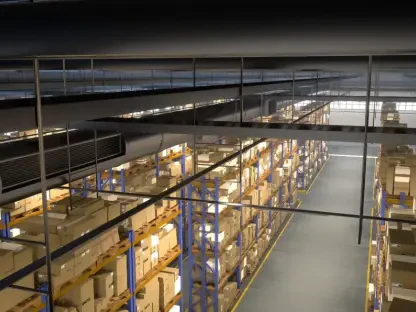Kazakhstan’s Rise in the Global Logistics Landscape
Imagine a vast, landlocked nation at the heart of Eurasia, seamlessly connecting the economic powerhouses of China and Europe through a network of rail lines that pulse with cargo. Kazakhstan, once seen merely as a transit route, is rapidly emerging as a central logistics hub, capitalizing on its unique position to redefine trade dynamics in the region. This transformation is not just a matter of geography but a result of deliberate strategy, positioning the country as a critical link in global supply chains.
Strategically located between East and West, Kazakhstan bridges major markets, facilitating the movement of goods across Central Asia, China, and Europe. Its role has expanded beyond a simple passageway to become a pivotal node in international trade, handling millions of tons of cargo annually. The country’s focus on enhancing connectivity has drawn attention from global stakeholders eager to tap into this burgeoning corridor.
Key drivers behind this shift include robust economic growth, substantial investments in infrastructure, and a strong emphasis on rail as the primary mode of logistics. Rail transport, known for its efficiency in moving heavy and voluminous cargo, has become the backbone of Kazakhstan’s logistics ambitions, supported by policies and projects aimed at strengthening its position in the Eurasian trade landscape.
Economic Growth and Infrastructure Development
Key Economic Indicators and Trends
Kazakhstan’s economy is demonstrating remarkable resilience and dynamism, with GDP growth reaching 4.8% last year and accelerating further in the current period. This upward trajectory is underpinned by strong performances across multiple sectors, reflecting a diversified economic base that continues to gain momentum. Manufacturing, mining, and construction are leading the charge, while service industries like transport and trade are also experiencing significant expansion.
This economic vigor is attracting substantial interest from international investors, particularly from the European Union, China, and the United States. The influx of foreign capital is fueling further development, as global businesses recognize the potential of Kazakhstan as a gateway to Central Asian markets. The sustained growth signals a stable environment for long-term investments, particularly in logistics and infrastructure.
Moreover, the economic upswing is creating a ripple effect, boosting domestic demand for goods and services while enhancing the country’s capacity to handle increased trade volumes. This dual impact of internal and external growth is solidifying Kazakhstan’s reputation as an emerging market with significant potential for logistics innovation.
Major Infrastructure Projects and Investments
To support its economic ambitions, Kazakhstan is channeling massive investments into transport infrastructure, spanning roads, airports, and rail networks. Projects such as the modernization of Almaty International Airport and the development of a new facility in Khorgos near the Chinese border are set to elevate the country’s aviation capabilities. These initiatives aim to complement the broader logistics ecosystem by improving connectivity.
However, rail infrastructure remains the cornerstone of these efforts, given its suitability for heavy cargo and cost-effective trade solutions. The rail network is being expanded and upgraded to handle growing freight demands, with a focus on optimizing routes that connect key trade partners. This emphasis on rail is evident in the increasing volume of goods transported, reflecting a strategic alignment with global trade needs.
A striking example of infrastructure-driven growth is the trade with China, which reached 32 million tons last year, marking a 13% increase compared to the previous period. Such figures underscore how investments in rail and related facilities are translating into tangible outcomes, reinforcing Kazakhstan’s role as a vital conduit for international commerce.
Challenges in Establishing a Logistics Hub
Despite its progress, Kazakhstan faces significant hurdles in cementing its status as a logistics hub. Infrastructure limitations persist, particularly along the Middle Corridor, a key trade route linking China and Europe. This corridor often requires multiple transport modes and frequent transshipments, leading to operational complexities that can delay shipments and increase costs.
External factors also pose challenges, with harsh weather conditions disrupting rail and road transport during certain seasons. Geopolitical uncertainties in the broader region further complicate trade flows, as fluctuating relations among neighboring countries can impact route reliability. These issues highlight the need for robust contingency planning to maintain consistency in logistics operations.
Addressing these obstacles requires sustained investment in infrastructure upgrades and enhanced international collaboration. Partnerships with global logistics players and neighboring nations could streamline processes, while technological innovations might mitigate weather-related disruptions. Overcoming these barriers is essential for Kazakhstan to fully realize its potential as a seamless trade corridor.
Geopolitical Dynamics and Regulatory Environment
Global disruptions have inadvertently boosted Kazakhstan’s prominence in rail logistics, as seen in the aftermath of maritime crises like the Red Sea incident a couple of years ago. Many companies shifted cargo from sea to rail routes passing through Kazakhstan, with some integrating rail permanently into their supply chains. This pivot underscores the country’s growing reliability as an alternative to traditional shipping lanes.
The regulatory landscape in Kazakhstan also plays a crucial role in supporting this transition. Policies focused on infrastructure development and international trade agreements are fostering an environment conducive to logistics growth. Streamlined customs processes and incentives for foreign investors are further enhancing the ease of doing business in the country.
Compliance and security measures are equally important in maintaining trust among trade partners. Kazakhstan has implemented stringent protocols to ensure the safety and integrity of goods in transit, addressing concerns about reliability. These efforts collectively bolster confidence in the country as a secure and efficient corridor for international trade.
Future Outlook for Kazakhstan’s Rail Logistics Role
Looking ahead, Kazakhstan is poised to capitalize on emerging opportunities in rail logistics, particularly in container transit. Recent data indicates a 43% increase in shipments to Europe via the Trans-Caspian Route, a trend expected to continue as demand for alternative trade pathways grows. This surge reflects the route’s potential to become a mainstay in Eurasian logistics.
Strategic partnerships are further enhancing efficiency, with initiatives like the Xi’an terminal in China serving as a catalyst for improved connectivity. Such collaborations are reducing transit times and costs, making rail an increasingly attractive option for businesses. These alliances are likely to deepen over the coming years, integrating Kazakhstan more firmly into global trade networks.
Long-term trends point toward greater diversification of trade routes amid economic and geopolitical shifts. As supply chains evolve, rail is expected to play a central role, supported by ongoing investments and innovations. Kazakhstan’s ability to adapt to these changes will determine its sustained relevance in the global logistics arena.
Conclusion: Kazakhstan as Eurasia’s Rail Powerhouse
Kazakhstan has solidified its journey toward becoming a pivotal logistics hub through a potent mix of economic growth, strategic location, and dedicated rail infrastructure development in recent years. Its role in facilitating trade between major global markets while supporting regional economies has proven indispensable. The country has emerged as a linchpin in Eurasian connectivity, navigating challenges with resilience.
Reflecting on this trajectory, the next steps involve prioritizing sustained investments to address infrastructure gaps, particularly along complex routes like the Middle Corridor. Strengthening international partnerships could further smooth operational hurdles, ensuring reliability. Additionally, embracing technological advancements to counter weather disruptions and geopolitical risks offers a pathway to greater efficiency.
Looking back, the opportunity for stakeholders lies in tapping into Central Asia’s logistics potential through targeted investments and collaborative ventures. Kazakhstan’s story highlights a region on the rise, and capitalizing on this momentum by fostering innovation and trust among trade partners paves the way for a more integrated and robust trade ecosystem in the years that follow.









